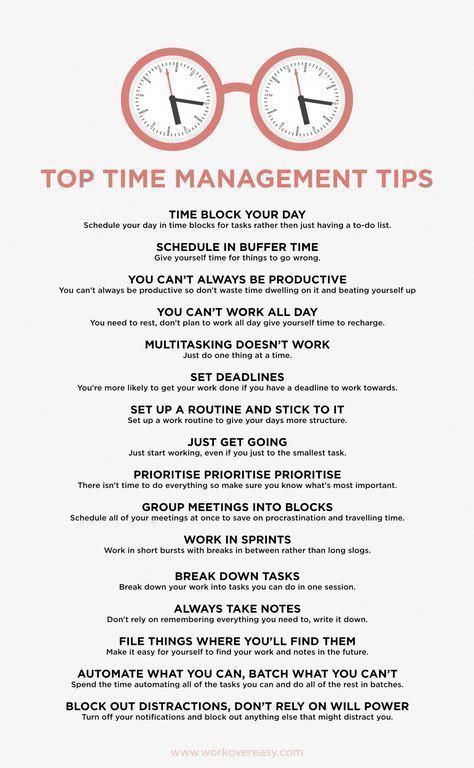If you feel like there are never enough hours in the day to accomplish everything on your to-do list, you are not alone. In a world where being busy is often seen as a badge of honor, it can be easy to prioritize quantity over quality when it comes to our work. However, mastering time management can help increase productivity, improve work-life balance, reduce stress, and ultimately lead to a more fulfilling life.
Here’s a practical 8-step guide to help you get started:
Step 1: Identify your goals
Before you can effectively manage your time, you need to know what you’re working toward. Take some time to reflect on your overarching goals and break them down into smaller, attainable tasks. This will help you prioritize what’s most important and stay focused on what matters.
Step 2: Create a schedule
Once you have a clear idea of what you need to accomplish, create a daily or weekly schedule that outlines when and where you will work on each task. Consider your peak productivity hours and factor in breaks to avoid burnout. Be sure to also schedule in time for personal pursuits and self-care activities.
Step 3: Set deadlines
Setting deadlines for yourself can help increase accountability and motivation. Be realistic with your deadlines, but also be firm in sticking to them. This will help prevent procrastination and promote a sense of urgency to complete tasks in a timely manner.
Step 4: Prioritize tasks
Not all tasks are created equal. Use the “Eisenhower Matrix” to help prioritize tasks based on urgency and importance. Tasks can be categorized as either “urgent and important,” “not urgent but important,” “urgent but not important,” or “not urgent and not important.” Focus on completing tasks in the “urgent and important” and “not urgent but important” categories first.
Step 5: Eliminate distractions
Distractions can derail even the most well-intentioned plans. Identify and eliminate distractions in your work environment, such as social media, email notifications, or unnecessary meetings. Consider using productivity apps or browser extensions to help minimize distractions and stay focused.
Step 6: Delegate tasks
You don’t have to do everything on your own. Consider delegating tasks to trusted colleagues or outsourcing tasks to experts in their respective fields. This will help free up time for you to focus on tasks that require your unique skills and expertise.
Step 7: Practice time blocking
Time blocking involves dedicating specific time blocks to work on specific tasks. This method can help increase focus and productivity by minimizing multitasking and distractions. Decide ahead of time how long each time block will be and stick to the schedule.
You might find these FREE courses useful
- Strategic Career Self-Management
- Free Time Management Tutorial – Effective Time Management for Employees
- Engineering Project Management: Scope, Time and Cost Management
- Work Smarter, Not Harder: Time Management for Personal & Professional Productivity
Step 8: Evaluate and adjust
Periodically evaluate your time management strategies and make adjustments as needed. What worked well? What didn’t? Reflect on your successes and challenges, and be open to trying new strategies that may help increase productivity and efficiency.
By following these 8 practical steps, you can take control of your time and increase productivity. Remember, time is a finite resource, but by managing it effectively, you can accomplish more and ultimately live a more fulfilled life.


